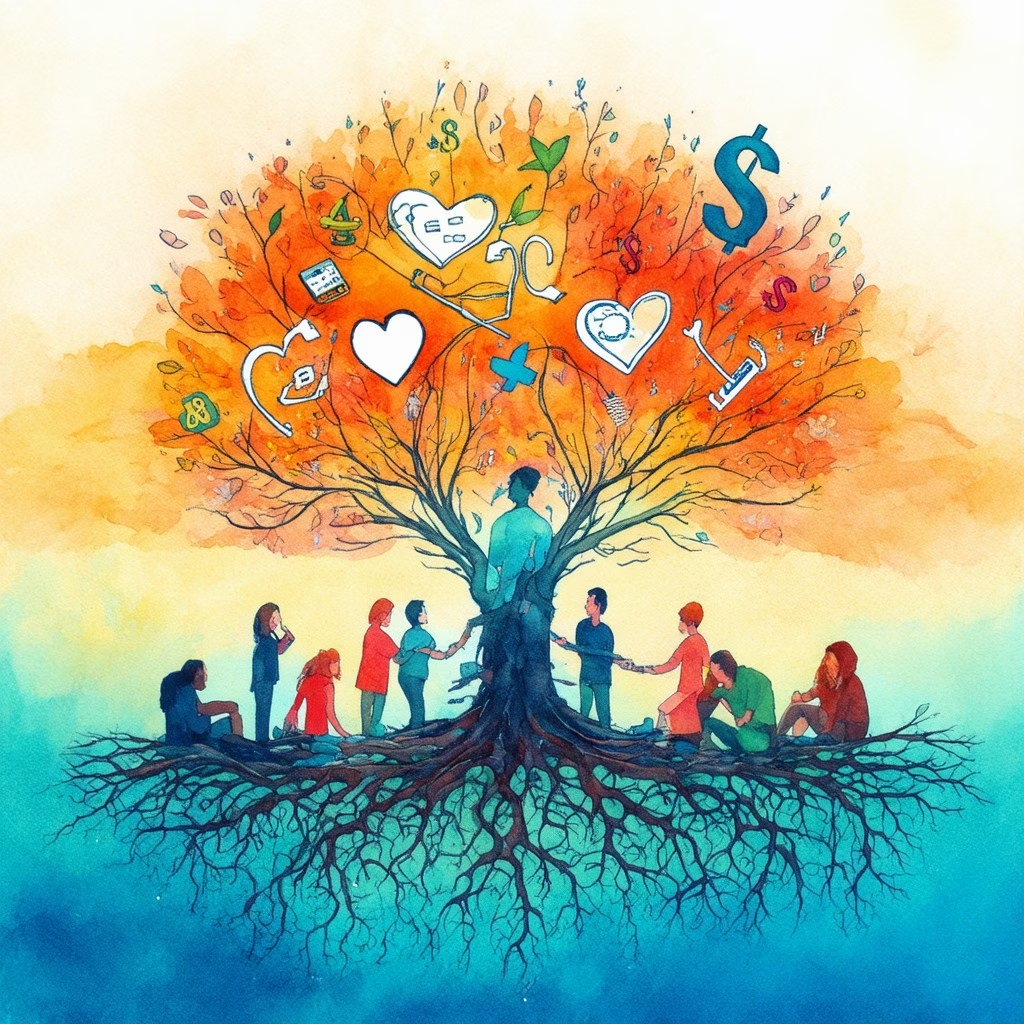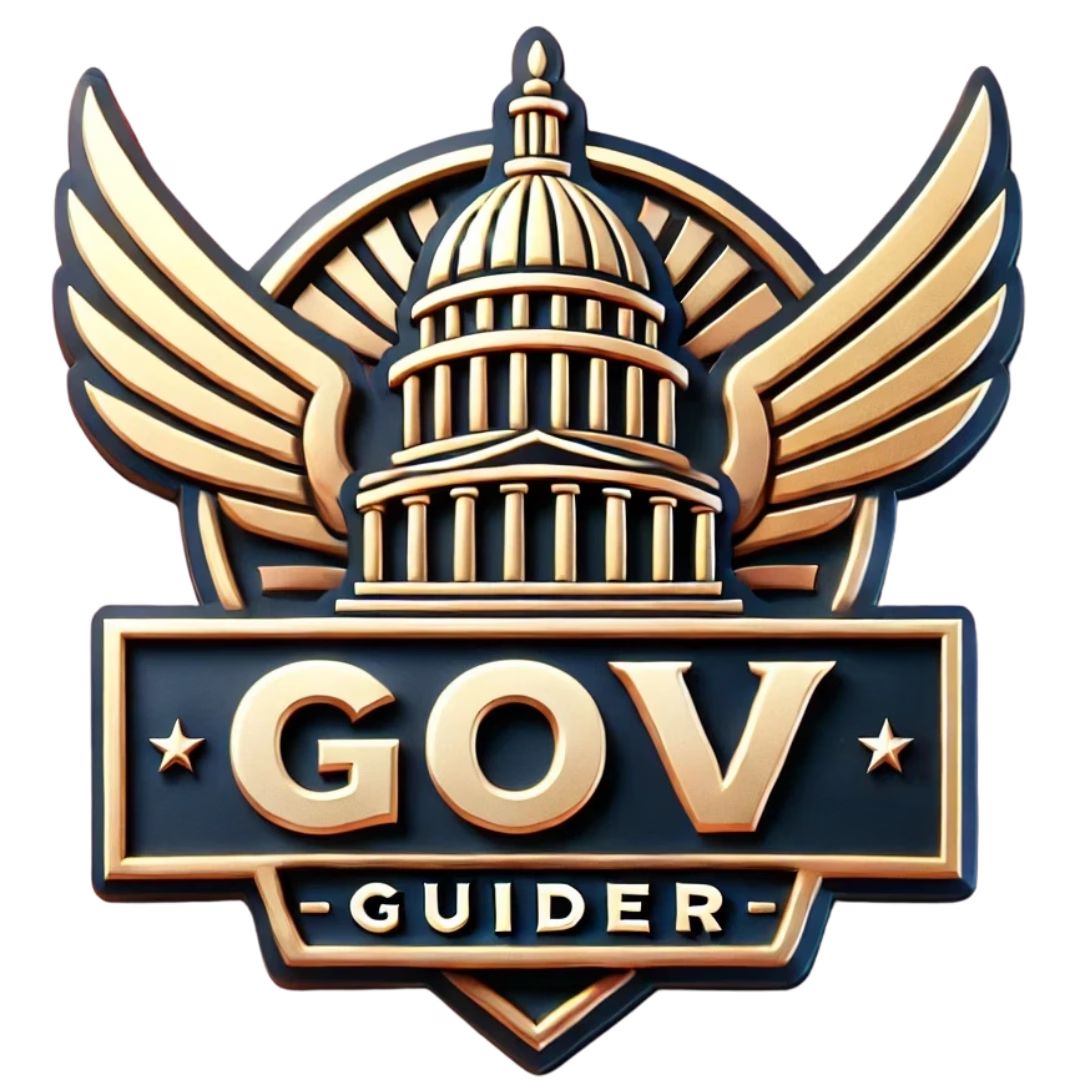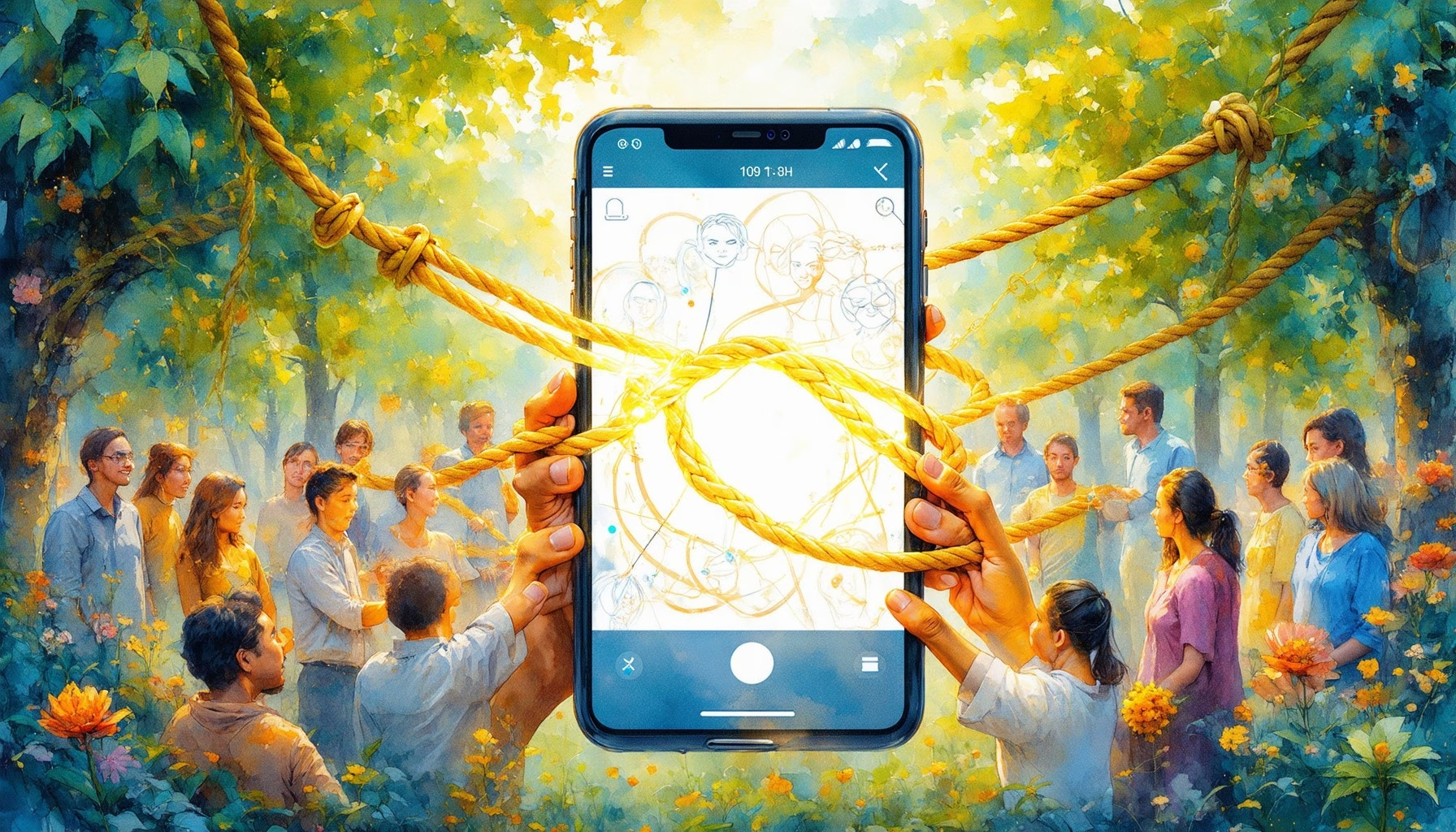Key Takeaways
- Discover the Lifeline Assistance Program, designed to provide essential communication services to low-income individuals and families.
- Eligibility includes meeting income guidelines or participating in federal assistance programs like SNAP and Medicaid.
- Benefit from monthly discounts up to $9.25 for phone or internet services, increasing to $34.25 for residents on tribal lands.
- Understand the differences between Lifeline and the Affordable Connectivity Program (ACP) to choose the best support for your needs.
- Learn how to apply for free government cell phones and internet services easily through the online lifeline application form.
- Access vital resources to maximize your benefits and ensure you remain connected in today’s digital age.
In today’s digital age, access to communication is essential, and the lifeline assistance government program plays a crucial role in bridging the gap for low-income individuals and families. This article will guide you through the intricacies of the Lifeline Assistance Program, detailing who is eligible for this invaluable support, the financial benefits it offers, and how you can secure your lifeline free phone service. We will explore key topics such as the payment structure of the Lifeline program, the specifics of the Kansas Lifeline program, and the differences between Lifeline and the Affordable Connectivity Program (ACP). Additionally, we will provide insights on how to apply for Lifeline assistance, including the steps to complete the lifeline application form online. Whether you’re seeking a free government cell phone or looking to understand how the lifeline program internet options work, this comprehensive guide will equip you with the knowledge you need to navigate the Lifeline Assistance Program effectively.
Who is eligible for the federal Lifeline program?
Understanding Lifeline Assistance Program Eligibility
The Lifeline program is designed to provide discounted phone and internet services to low-income individuals and families. To qualify for Lifeline support, applicants must meet one of the following criteria:
- Income-Based Eligibility:
- Households with an income at or below 135% of the Federal Poverty Guidelines are eligible. For 2023, this translates to an annual income of approximately $18,000 for a single-person household and $36,000 for a family of four.
- Program-Based Eligibility:
- Participation in certain federal assistance programs qualifies individuals for Lifeline. These programs include:
- Supplemental Nutrition Assistance Program (SNAP)
- Medicaid
- Federal Public Housing Assistance (FPHA)
- Supplemental Security Income (SSI)
- Veterans Pension and Survivors Benefit
- Tribal programs such as the Bureau of Indian Affairs General Assistance or Tribal Head Start.
- Participation in certain federal assistance programs qualifies individuals for Lifeline. These programs include:
- State-Specific Programs:
- Some states offer additional programs that may qualify individuals for Lifeline. It is advisable to check local regulations and offerings.
For more detailed information and to apply, individuals can visit the Federal Communications Commission (FCC) website or consult resources like Gov Guider, which provides guidance on government assistance programs.
Key Criteria for Lifeline Free Phone Service
To access the lifeline free phone service, applicants must ensure they meet the eligibility criteria outlined above. This program not only aims to provide essential communication services but also helps bridge the digital divide for low-income households. By qualifying for the lifeline phone program, individuals can receive a free government cell phone or significant discounts on their phone service.
It’s important to gather necessary documentation, such as proof of income or participation in qualifying programs, when filling out the lifeline application. This will streamline the process and increase the chances of approval. For assistance with the application process, you can refer to resources like Gov Guider for comprehensive guides on how to get a free government cell phone.

How much does the Lifeline program pay?
The Lifeline program is a federal initiative designed to provide affordable communication services to low-income households. Understanding the payment structure of the Lifeline assistance program is crucial for those looking to benefit from its offerings. The Lifeline program offers a monthly discount of up to $9.25 on one phone or internet service per qualifying household. For individuals residing on Tribal lands, the discount increases significantly, providing up to $34.25 per month. This financial assistance aims to ensure that essential communication services remain accessible to those who may struggle to afford them.
Lifeline Program Payment Structure Explained
The payment structure of the Lifeline assistance program is straightforward yet impactful. The program provides a monthly discount that can be applied to either a lifeline free phone service or a lifeline program internet service. This means that eligible households can choose to receive a discount on their phone bill or internet service, depending on their needs. The goal is to alleviate the financial burden of communication costs, making it easier for low-income families to stay connected.
Eligibility for the Lifeline program typically requires participants to meet certain income criteria or to be enrolled in specific assistance programs, such as Medicaid or Supplemental Nutrition Assistance Program (SNAP). For more detailed information on eligibility and application processes, you can visit the Federal Communications Commission (FCC) website or consult the National Council on Aging for resources tailored to senior citizens.
Financial Benefits of the Lifeline Assistance Program
The financial benefits of the Lifeline assistance program extend beyond just the monthly discounts. By providing access to free government cell phones and affordable communication services, the program plays a vital role in enhancing the quality of life for low-income households. The lifeline phone service not only helps families stay connected with loved ones but also enables them to access essential services, job opportunities, and educational resources.
Moreover, the Lifeline program supports various communication needs, including voice calls and internet access, which are increasingly important in today’s digital age. Households can apply for Lifeline assistance through the Lifeline application form online, ensuring they receive the necessary support to maintain their communication services.
What is the Kansas Lifeline program?
The Kansas Lifeline program is a federal and state initiative designed to provide discounted telecommunications services to eligible low-income residents. This program aims to ensure that all Kansans have access to essential communication services, which are vital for employment, education, and emergency situations.
Overview of the Kansas Lifeline Program
The Kansas Lifeline program offers significant benefits to low-income households, ensuring they can stay connected. By participating in this program, eligible residents can receive discounts on their monthly phone service or even obtain a free government cell phone. This initiative is crucial for those who rely on communication for job searches, educational opportunities, and emergency contacts.
Specifics of Lifeline Phone Program in Kansas
Key features of the Kansas Lifeline program include:
- Eligibility Requirements: To qualify, applicants must participate in government assistance programs such as Medicaid, SNAP, or Federal Public Housing Assistance, or have a household income at or below 135% of the Federal Poverty Guidelines.
- Benefits Offered: Eligible participants can receive discounts on monthly phone service or a free cell phone, along with access to additional services like text messaging and data plans, depending on the provider.
- Application Process: Interested individuals can apply through approved telecommunications providers, requiring proof of eligibility, such as income documentation or proof of participation in qualifying assistance programs.
- Participating Providers: Various telecommunications companies in Kansas participate in the Lifeline program, offering different plans and services. It is advisable for applicants to compare options to find the best fit for their needs.
For more detailed information about the Kansas Lifeline program, residents can visit the Federal Communications Commission guidelines on Lifeline services, ensuring they can access the support they need.
What is the difference between Lifeline and ACP?
The Lifeline Assistance Program and the Affordable Connectivity Program (ACP) serve distinct purposes in supporting low-income households, particularly in the realm of communication and internet access. Understanding these differences can help you determine which program best meets your needs.
Comparing Lifeline Assistance Program and ACP
The difference between Lifeline and the Affordable Connectivity Program (ACP) can be summarized as follows:
- Focus: Lifeline primarily supports landline and cellular phone services, ensuring basic communication access for low-income households. In contrast, ACP is designed to provide support for broadband internet access, facilitating digital connectivity and online resources.
- Benefits: Lifeline offers monthly discounts on phone service, with higher discounts available for residents on tribal lands. ACP provides monthly discounts on internet service and includes one-time discounts for laptops or tablets, enhancing access to technology.
- Eligibility: Lifeline eligibility is based on household income, specifically up to 135% of the Federal Poverty Guidelines, or participation in certain government programs such as SNAP and Medicaid. ACP eligibility extends to households with incomes up to 200% of the Federal Poverty Guidelines or those enrolled in government assistance programs, including SNAP and Medicaid.
- Monthly Discount: Lifeline offers a maximum discount of $9.25 per month for general participants, with increased amounts for those on tribal lands. ACP provides a discount of up to $30 per month for general participants, with higher amounts for tribal lands.
- Enrollment Process: Lifeline subscribers are automatically eligible for ACP benefits; however, they must separately enroll in the ACP by contacting a participating provider.
- Key Differences: Lifeline is focused on basic phone services, while ACP targets broadband internet access. ACP has a higher income threshold for eligibility compared to Lifeline. ACP offers more substantial subsidies for broadband services and technology, whereas Lifeline is centered on basic connectivity.
For more detailed information on eligibility and benefits, you can refer to the Federal Communications Commission (FCC) website, which provides comprehensive guidelines on both programs.
Benefits of Lifeline Program Internet vs. ACP
When considering the benefits of the Lifeline program internet services compared to those offered by ACP, it’s essential to evaluate your specific needs:
- Lifeline Program Internet: This program allows eligible participants to receive discounts on internet services, making it easier for low-income households to access essential online resources. Lifeline internet services are often bundled with lifeline free phone options, ensuring comprehensive communication solutions.
- ACP Benefits: The ACP not only provides discounts on internet service but also includes one-time discounts for devices such as laptops and tablets. This aspect is particularly beneficial for families needing technology to support education and remote work.
Both programs aim to bridge the digital divide, but the choice between Lifeline and ACP will depend on whether your primary need is for phone service or internet access. Understanding these distinctions can help you make an informed decision about which government assistance program best suits your household’s needs.

How much does Lifeline cost?
The lifeline assistance program offers significant benefits, but understanding the costs associated with the lifeline phone service is crucial for potential users. The Lifeline program is designed to provide affordable communication options for low-income individuals, ensuring that everyone has access to essential phone services.
Cost Breakdown of Lifeline Phone Service
The lifeline phone program typically does not charge participants for the basic service, as it is subsidized by the government. However, there may be some costs involved depending on the provider and the specific plan chosen. For instance, while the lifeline free phone option is available, some providers may charge a small monthly fee for additional features or services.
- Activation Fees: Some providers may require an upfront activation fee, which can vary. It’s essential to check with your chosen provider for specific details.
- Monthly Subscription: While many users can access free phone services, additional features such as unlimited texting or data may incur a monthly fee.
- Device Costs: If you opt for a smartphone or a more advanced device, there may be costs associated with purchasing the device, although many providers offer free government cell phones.
Understanding Lifeline Government Phone Expenses
When considering the lifeline assistance program free phone options, it’s important to evaluate the total expenses involved. While the basic service is often free, users should be aware of potential costs associated with:
- Upgrades: If you choose to upgrade your phone or plan, additional costs may apply. For example, opting for a smartphone with data capabilities can lead to higher monthly fees.
- Additional Services: Services such as voicemail, call waiting, or international calling may not be included in the free plan and can lead to extra charges.
- Provider Variability: Different providers may have varying pricing structures, so it’s advisable to compare options to find the best fit for your needs.
For more detailed insights into maximizing your benefits from the lifeline assistance program, consider visiting Maximizing Lifeline Benefits. Understanding these costs will help you make informed decisions about your lifeline phone service options.
Can the government pay for my internet?
Yes, the government can help pay for your internet service through programs like Lifeline. Lifeline is a federal assistance program designed to make telecommunications services more affordable for low-income individuals and families. Here’s how it works:
- Eligibility Criteria: To qualify for Lifeline, you must meet specific income requirements or participate in certain federal assistance programs. This includes programs such as Medicaid, Supplemental Nutrition Assistance Program (SNAP), or Federal Public Housing Assistance. The eligibility is based on your household size and income level.
- Types of Assistance: Lifeline provides a monthly discount on your internet service, which can significantly reduce your bill. The discount can vary depending on the service provider and the state you live in, but it generally ranges from $9.25 to $34.25 per month.
- Application Process: To apply for Lifeline, you can visit the Universal Service Administrative Company (USAC) website or contact your internet service provider directly. The application process typically involves providing proof of income or documentation showing your participation in a qualifying program.
- Additional Resources: Besides Lifeline, other programs may assist with internet costs, such as the Emergency Broadband Benefit (EBB), which was introduced to help households during the COVID-19 pandemic. This program provides a temporary discount on broadband service for eligible households.
Exploring Lifeline Internet Options
The Lifeline program internet options are designed to ensure that low-income households have access to essential online services. By participating in the Lifeline program, you can choose from various internet service providers that offer discounted plans. These plans often include:
- High-Speed Internet: Many providers offer high-speed internet options that allow for streaming, online education, and remote work.
- Flexible Plans: Depending on your needs, you can select plans that fit your household’s internet usage, ensuring you get the best value.
- Bundled Services: Some providers may offer bundled services that include both internet and phone services at a reduced rate, making it easier to manage your communication needs.
To find the best Lifeline internet options available in your area, visit the Lifeline Support website for a list of participating providers and their offerings.
How to apply for Lifeline assistance?
Applying for the Lifeline assistance program is a straightforward process designed to help eligible individuals access essential communication services. Below are the steps you need to follow to complete the Lifeline application form online.
Steps to Complete the Lifeline Application Form Online
- Visit the Official Lifeline Website: Start by navigating to the Lifeline Support website. This site provides comprehensive information about the Lifeline assistance program and guides you through the application process.
- Check Eligibility: Before applying, ensure you meet the eligibility criteria for the Lifeline assistance program. You can find detailed information on eligibility requirements on the Lifeline Support website.
- Gather Required Documents: Prepare the necessary documentation, which may include proof of income, participation in qualifying government assistance programs, or other identification documents.
- Fill Out the Application Form: Complete the Lifeline application form online. Make sure to provide accurate information to avoid delays in processing your application.
- Submit Your Application: After filling out the form, submit your application. You should receive a confirmation of your submission, which you can use to track your application status.
- Follow Up: If you do not receive a response within a reasonable timeframe, contact Lifeline customer service for assistance. They can provide updates on your application status.
Navigating the Lifeline Program Login Process
Once your application is approved, you may need to log in to manage your Lifeline account. Here’s how to navigate the Lifeline program login process:
- Access the Lifeline Login Page: Go to the Lifeline Support website and click on the login option.
- Enter Your Credentials: Input your username and password. If you are a new user, you may need to create an account first.
- Manage Your Account: Once logged in, you can view your Lifeline phone service details, update personal information, or check your application status.
- Contact Support if Needed: If you encounter any issues during the login process, reach out to Lifeline customer service for assistance.
For more information on maximizing your benefits from the Lifeline assistance program, visit Maximizing Lifeline Benefits.




